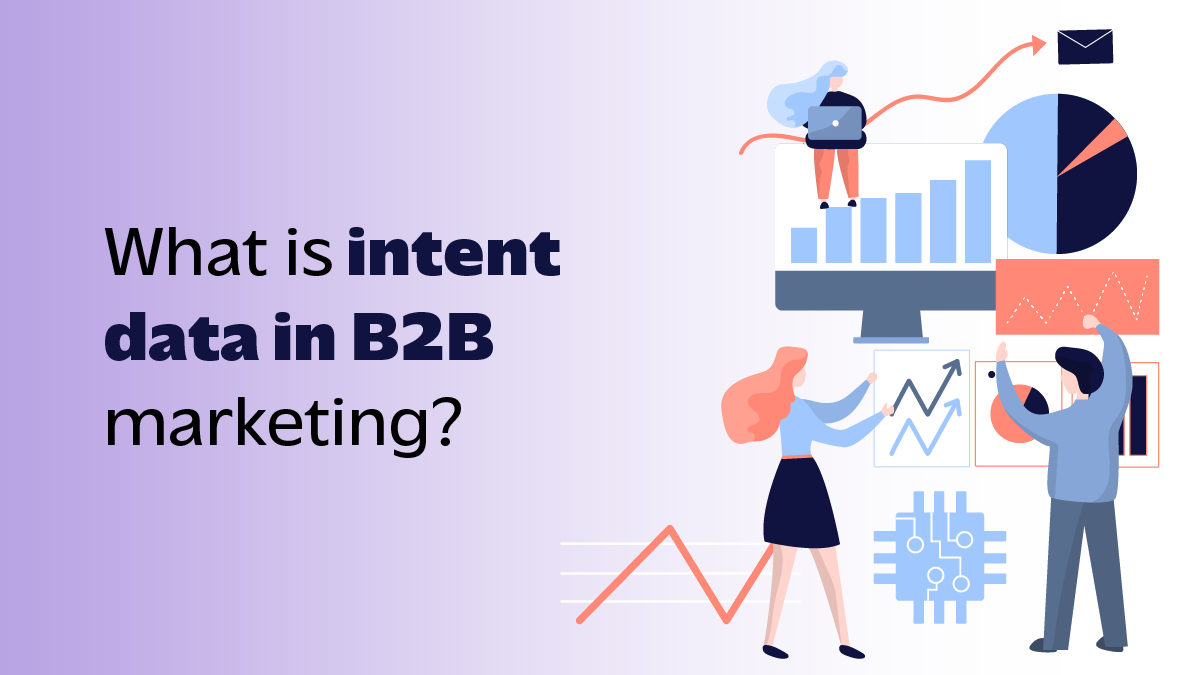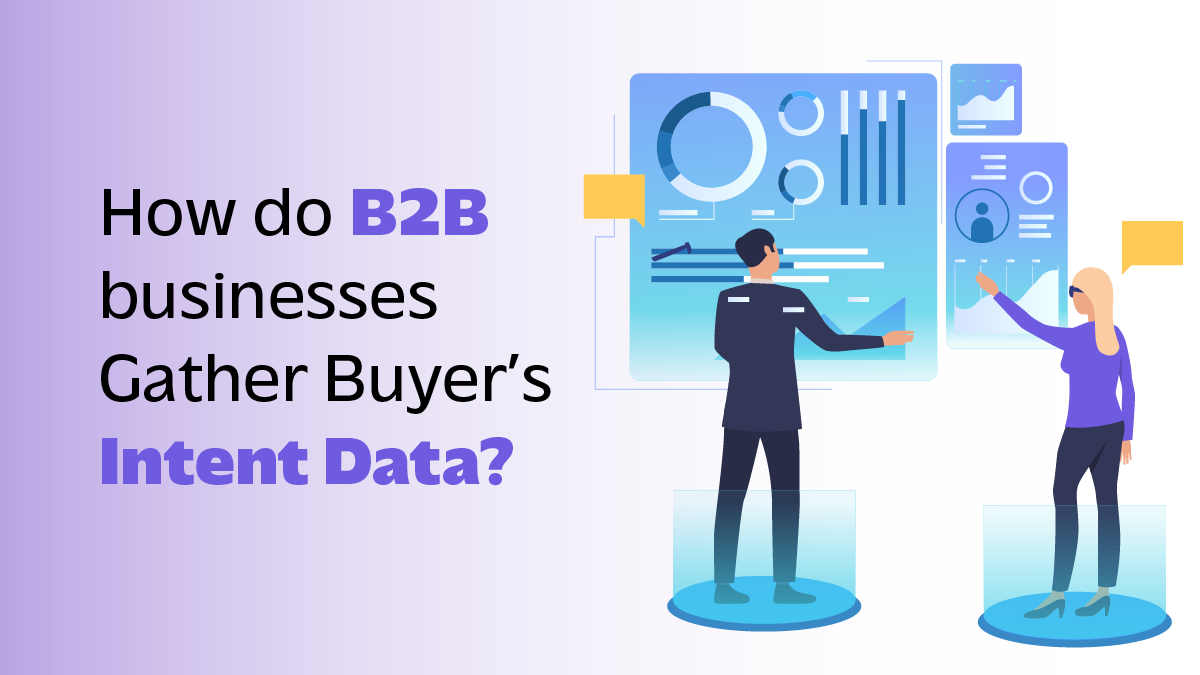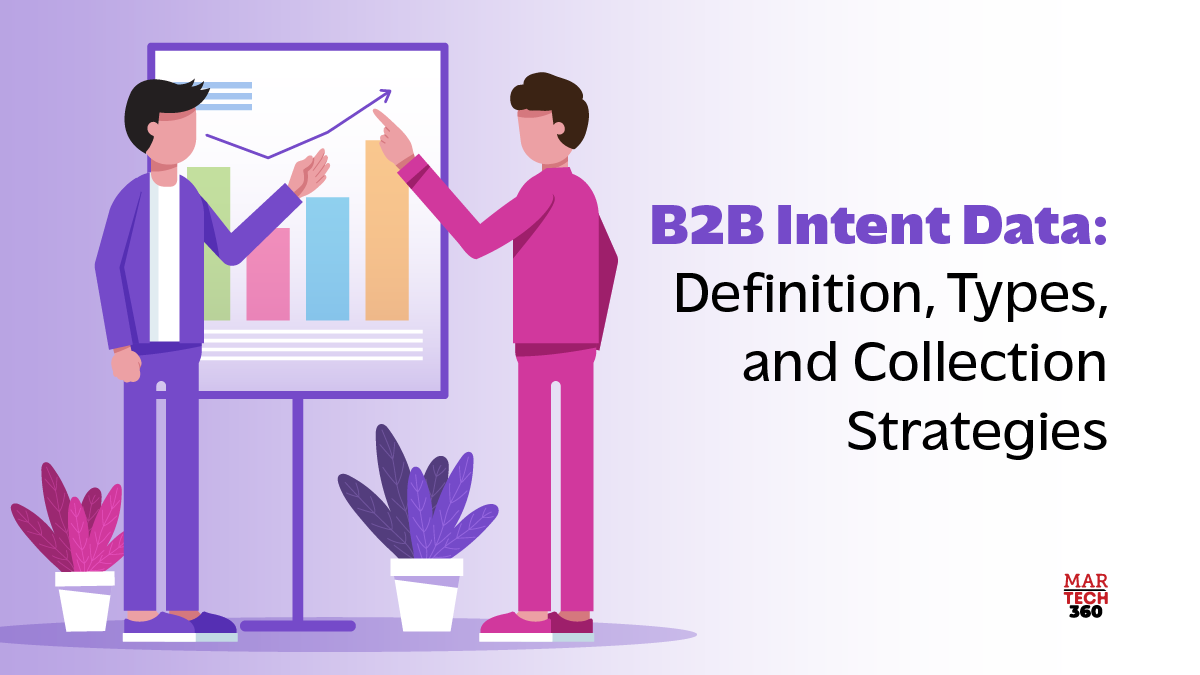Many businesses are seeking opportunities to have higher conversion rates and spend their marketing budgets wisely. If your organization has the same objectives, B2B intent data can be an effective tool to achieve your goals.
B2B marketing strategies using intent data can offer the revenue operation teams valuable insights into the target audience’s requirements and preferences. It is one of the most efficient ways to determine the topics they are interested in, what queries they might have, and the bottlenecks they want to address.
What is intent data in B2B marketing?

Gathering data regarding web users’ content consumption habits and behavioral patterns that showcase their preferences, requirements, and interests to determine what and when they will be ready to make a purchase is referred to as intent data in B2B marketing. Business decision-makers can integrate artificial intelligence in their MarTech stack to gather these insights, which form the basis of account intelligence. These intelligent insights about the prospect can allow the pre-sales and sales team to have a better understanding of the account or the lead.
The efforts of the revenue operations teams can be in vain if they do not have the right intent data about their prospects. A few marketing teams might draft an effective marketing plan but might not deliver the expected results because of less insight into what worked and what did not. Gathering accurate and relevant B2B intent data is necessary for organizations to improve their marketing approach and have higher sales.
What are the Types of B2B Intent Data Gathered?
Given below are the three types of B2B intent data that businesses can consider for collection:
● Explicit
Explicit intent data is a type of data that is gathered from prospects who proactively share their information through forms on the website. Such intent data is highly accurate. However, it is limited because not all users who visit the website will fill out the form and give the required information.
● Implicit
Implicit intent data is a type of intent data in which prospects share their information indirectly through their digital footprint or the websites they visit. Implicit intent data can be less accurate than explicit information as it relies on indirect signals. However, marketers can get a bird eye view of the client’s engagement.
● Derived
Businesses can embrace derived intent data by mixing valuable insights from explicit and implicit data to get a comprehensive view of a client’s behavior. Derived intent data is one of the most correct information sources.
How do B2B businesses Gather Buyer’s Intent Data?

The competitive landscape is becoming more fierce with each passing day. Hence, intent data has become one of the most important factors for businesses to succeed in such a competitive environment. Marketers employ various strategies to gather clients’ intent to purchase a product or service. Marketing teams can gain user intelligence from web analytics, website visits, social media, search engine data, and surveys. Furthermore, integrating advanced technologies such as natural language processing (NLP), machine learning (ML), and data mining will help gain valuable insights from the data gathered.
Also Read: The Rise of B2B Influencer Marketing on Social Media: 2024 and Beyond
Businesses should collect buyer’s intent data in real-time to get actionable insights into the clients purchasing power and behavioral patterns. B2B intent data will give marketers insights about which prospect will buy what products and through which channel. It will assist the pre-sales teams in deciding which channel to leverage to deliver the message at the right time. Crafting B2B marketing strategies using intent data will help businesses deliver tailor-made customer experiences that provoke the users to engage with the campaigns.
Who Will Benefit From Crafting B2B Marketing Strategies Using Intent Data?
Given below are a few verticals that could reap the benefits of B2B marketing strategies using intent data:
● Revenue Operations Teams
The pre-sales and sales team can determine and focus on a particular product strategy campaign by gathering intent data. Revenue operations (RevOps) teams can segment the collected based on their intent. It is the initial step for gathering first-party intent data. Presales teams can use this data to customize the messages to resonate with the client’s needs and preferences.
Collecting first-party Intent data is an effective strategy for sales teams to understand the clients’ or prospects’ level of interest in making a purchase. This strategy enables the RevOps team to make a long-lasting impact on the target audience and develop a trustworthy relationship with them. Pre-sales teams can ensure that the messages reach the right target at the right time through the right marketing channels. Moreover, analyzing the content consumption of the users will help organizations to evaluate the impact of their marketing campaigns. The teams can optimize their strategies based on the outcomes.
● Marketing Agencies
Marketing agencies are constantly on the prowl to seek new opportunities to have a better understanding of their target audience and the requirements of their customers. B2B intent data is a valuable tool for agencies to design more bespoke campaigns, determine clients’ intent effectively, and generate accurate predictions.
Agencies can utilize intent data to monitor how clients engage with a brand’s website and at what frequency they browse the content and social media profiles. Gathering this information assists agencies in making data-driven decisions regarding their campaigns and target audiences. B2B intent data helps agencies determine the latest trends in the industry and the right audience for their campaigns and design more effective messaging.
● Publishers
Content is the king for organizations of all sizes, types, and industries in today’s digital-first media landscape. It is crucial for the digital media industry to determine what topics and content their audiences are interested in reading. This approach will help to deliver content they are interested in reading, keep them engaged, and increase content consumption. Publishers that rely on intent data to craft their content strategy will be able to stay ahead of the competition. It assists them in crafting more relevant content that resonates with the readers.
B2B intent data will offer valuable insights into which content formats are successful for which target audience.
B2B Intent Data in a Nutshell
Gathering buyers’ purchase intent data to gain actionable insights can do wonders for businesses of all sizes, types, and industries. Revenue operations teams, publishing, and marketing agencies can benefit the most from collecting B2B intent data of their prospects. It is an effective way to enhance the sales approach to increase the conversion rate and have a trustworthy relationship with their prospects.


Comments are closed.